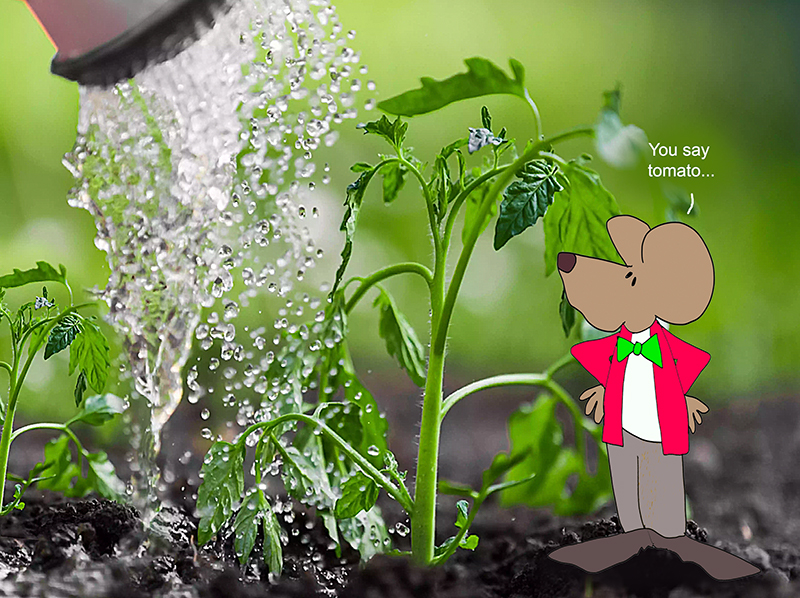Most of the time, we don’t give them much thought. But as summer approaches, tomatoes become a thing of abundance. Neighbors hand them over fences by the fist full. Friends arrive with the brown paper bag, folded at the top, a stash of homegrowns inside. This is tomato time.
We always think of them as being red and plumpy. But tomatoes can come in a wide variety of colors, I’ve learned. They can be yellow, pink, purple, black, and some are even white. Of course, we all know the green ones, battered and fried crisp in a pan. The kind that will make your whistle stop.
They aren’t always used for eating. They’ve been thrown at politicians and at out-of-tune singers on stage. Other times, the tossing of the tomato is all in good fun. The biggest tomato fight in the world happens each year in the small Spanish town of Buñol. They have a festival there, called La Tomatina. Lots of people, like 40,000 people, all throw 150,000 tomatoes at each other. It’s a real smash.
Here in Ohio, tomato juice is the official state beverage. I don’t know too many tomato juice drinkers. In New Jersey, the tomato is the official state vegetable. I hate to break the news to Jersey, but tomatoes are a fruit. Technically. However, they are considered vegetables by nutritionists. And by most other people. Let’s just say, tomatoes go both ways.
Most of us have the preconception that tomatoes are Italian. But they are not. The English word tomato comes from the Spanish word, tomate. And that came from an Aztec language, the word being tomatl.
Tomatoes are a member of the deadly nightshade family. As such, and for a long time, tomatoes were erroneously thought to be poisonous by the Europeans (although the leaves truly are poisonous).
Anyway, the tomato is native to western South America and Central America. In 1519, Cortez discovered tomatoes growing in Montezuma’s gardens. So good old Cortez brought seeds back to Europe. Once there, they were planted as ornamental curiosities, but they were not eaten.
Then, much later, here in America and on this date, June 28, 1820, the tomato was proven to be non-poisonous by Colonel Robert Gibbon. That courageous young man stood on the steps of the courthouse in Salem, New Jersey, and ate a tomato for all the world to see. Well, at least the 15 or 20 people who were probably standing around watching. Breathlessly.
And today, tomatoes are everywhere. There are around 10,000 varieties of tomatoes worldwide. In all varieties, big, small, soft, hard. According to the Guinness World Record (as of 2013), the heaviest tomato weighed 7 pounds, 12 ounces, and was grown in Oklahoma. My dog Louis doesn’t weigh quite that much.
So, there it is. The non-poisonous tomato, on our bacon, lettuce, concoctions. For me, it is with white toast and loads of mayo. But everyone has their own.
Tomatoes can teach us a lesson about life too. For centuries, people regarded this thing as a poison and would not even consider eating it. Then, through education and understanding, this toxic thing became a nutritious wonder.
This can go the same way with ideas. What is foreign and toxic to some people, might really be an incredibly normal and good thing, just waiting for acceptance.
==========
“A weed is but an unloved flower.”
― Ella Wheeler Wilcox
==========
“Hate is a lack of imagination.”
― Graham Greene, The Power and the Glory
==========
“My happiness grows in direct proportion to my acceptance, and in inverse proportion to my expectations.”
― Michael J. Fox
===========
Saucy. If you need to catch up.
